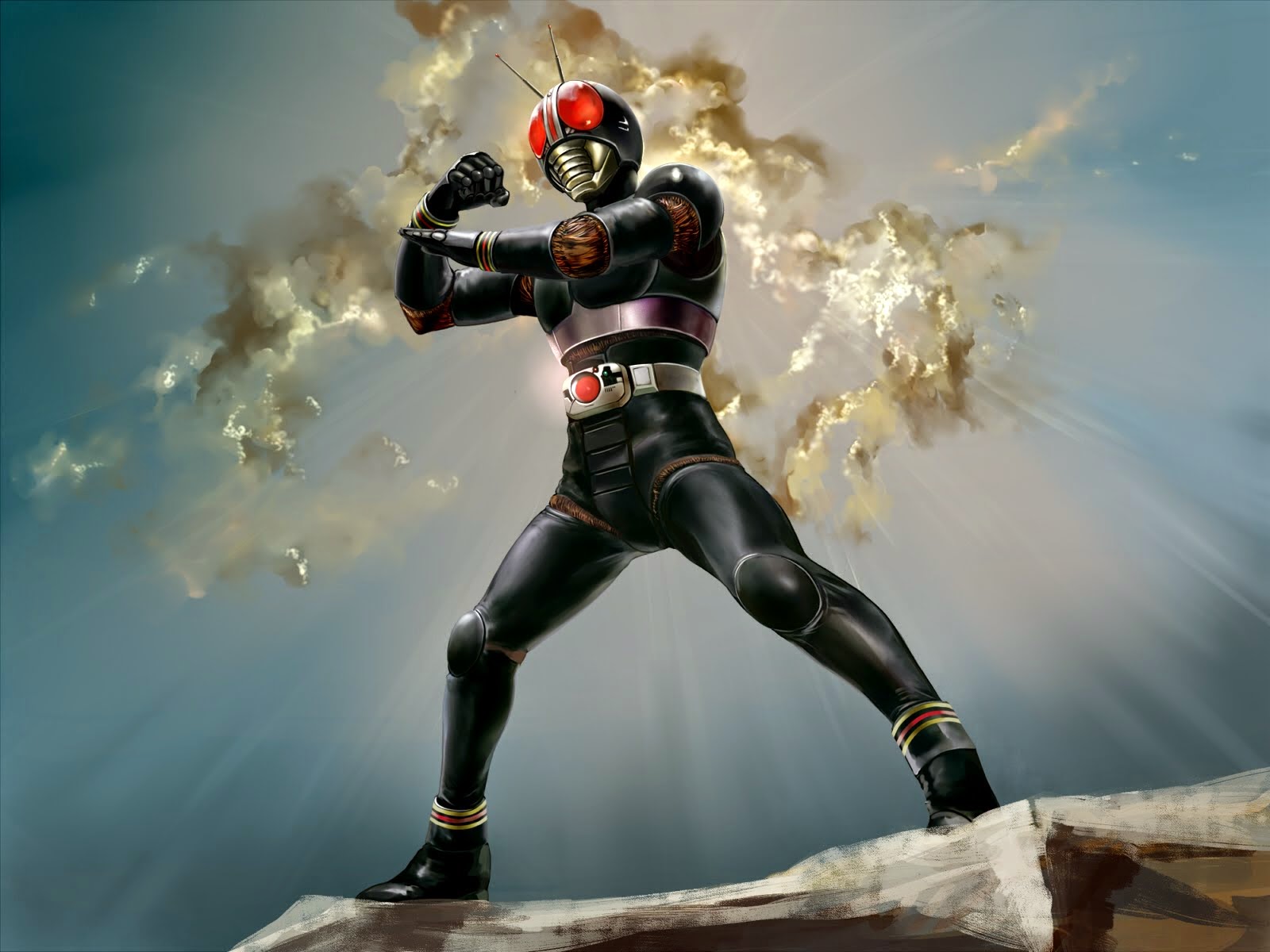(Warning: The original post had a rant about life, since today is my birthday and I'm very grumpy during my birthday. But, because that had little to do with this gaming blog, I transferred it to my other blog. If you are curious to read the rant, just click here)
Since today is my birthday, I would like to post something special: Kamen Rider Black, a character from a show that helped shaping my way of seeing the world. I watched the show when I was very little, hardly understanding anything out of it – but the images clung on me, following me as I grew up. The show was dark, the hero oft had people betray him, walking alone and sacrificing himself for the Greater Good. The villains were perversions of life, aberrations created with evil intent by uncaring beings whose purpose solidified only in domination and profit. Nevertheless, the hero fought, besides the unbelievable odds against him and inevitable failure.
Well, here are the stats for him:
Since today is my birthday, I would like to post something special: Kamen Rider Black, a character from a show that helped shaping my way of seeing the world. I watched the show when I was very little, hardly understanding anything out of it – but the images clung on me, following me as I grew up. The show was dark, the hero oft had people betray him, walking alone and sacrificing himself for the Greater Good. The villains were perversions of life, aberrations created with evil intent by uncaring beings whose purpose solidified only in domination and profit. Nevertheless, the hero fought, besides the unbelievable odds against him and inevitable failure.
Well, here are the stats for him:
Kotaro Minami, the Kamen Rider Black
HD 8, or 48 hp
At 10 [+10], 2 martial arts
attacks for 2d6 damage each
AC 0 [20]
SV 8+
All Neutral Good
Xp 4.000
Observation: In his normal
human form, Kotaro has only 1 HD, 4 hp, At 19 [+1], damage 1d6, AC 10
[0], SV 18+ and XP 10.
Introduction: Kotaro Minami
was taken by the evil Gorgom cult, transformed into an insect-cyborg
and infused with the Black Sun Kingstone (the belt at his waist). However, instead of
following the Gorgom's plans and become one of the Century Kings –
together with his stepbrother, Nabuhiko, also taken by the Gorgoms –
he was able to escape. Now, being able to transform into Kamen Rider
Black, Kotaro hopes in rescuing his stepbrother while fighting
against the Gorgom's monster army.
- Special attacks:
. Rider Punch: A special
energy punch that Black can deliver. Works as a normal attack, unless
the creature is below 1/ 2 maximum hp. Then, it must make a saving
throw against Death or be destroyed.
. Rider Kick: A special
energy kick that Black can deliver. It functions as a normal attack.
However, if the creature is below 1/ 4 maximum hp, it must make a
saving throw against Death with -4 penalty of be destroyed.
. Kingstone Flash: A very
powerful energy surge that can be unleashed by his Kingstone. It
makes any creature with 30 HD or less to back up in fear for 1d4
turns, allowing Black to catch up his breath and recuperate. Can be
used only once per encounter.
- Special Defenses:
. Multi-eye: His special
eyes enable him to see in the dark and also find weakspots in an
enemy. If Kamen Rider awaits a whole turn analysing an enemy, his
next attack, if hits, will be critical (or 3x damage if it also gets
a natural 20).
. Sensoring ears: The
triangles on the side of her head are very sensitive ears, enabling
him super human hearing.
. Rider Sensor: The antennae
on his head gives him another senses, allowing him to perceive
enemies too fast or hidden.
. Power Stripes:
The stripes on his neck and wrists may blow to protect him from any
kind of movement restrainment, be it magical or not. Kamen Rider
black acts as if in the effect of a Freedom
spell.
Well, I hope you folks liked this. Kamen Rider Black is one very
important show for me. Anyway, as my classes at the university resume
and I go searching for a job, I don't believe I will be able to
continue writing here daily – maybe once or twice a week, I don't
know. It's been good doing so and was an interesting experience, I
should say. See you people soon.
Until next time,
Valete!
Image 1
If you liked this post, you may help me improve by sharing it in your social networks. Also, if you are curious, give it a look at my music and literary blog. If you like my work, consider becoming my patreon.

















